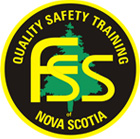Mounting Wheels
Hazards Identified
Traffic accidents involving loose wheels, damaged equipment, injuries to changing wheels
Hazard-Specific Personal Protective Equipment
Safety glasses with side shields, CSA approved hard hat, CSA Grade I foot protection, reflective vest
Hazard-Specific Training
Wheel and rim installation course
Safe Work Practice
Wear proper protective equipment.
In continuous with changing wheel procedure:
- Place the inner / outer wheel back in the same spot as prior to removal if possible.
- Inner Wheel – Make sure the valve
- Outer Wheel – Center the valve
- Tighten nuts to approximately 50 ft-lbs
- Ensure wheel chocks are in place and the transmission is in first gear.
- Tighten nuts gradually in proper sequence to torque valve with a certified torque wrench
- Lower the wheel to the ground and check torque.
- Remove the jack, chocks and reflectors.
- Check torque again after traveling between 80 and 160 km.
